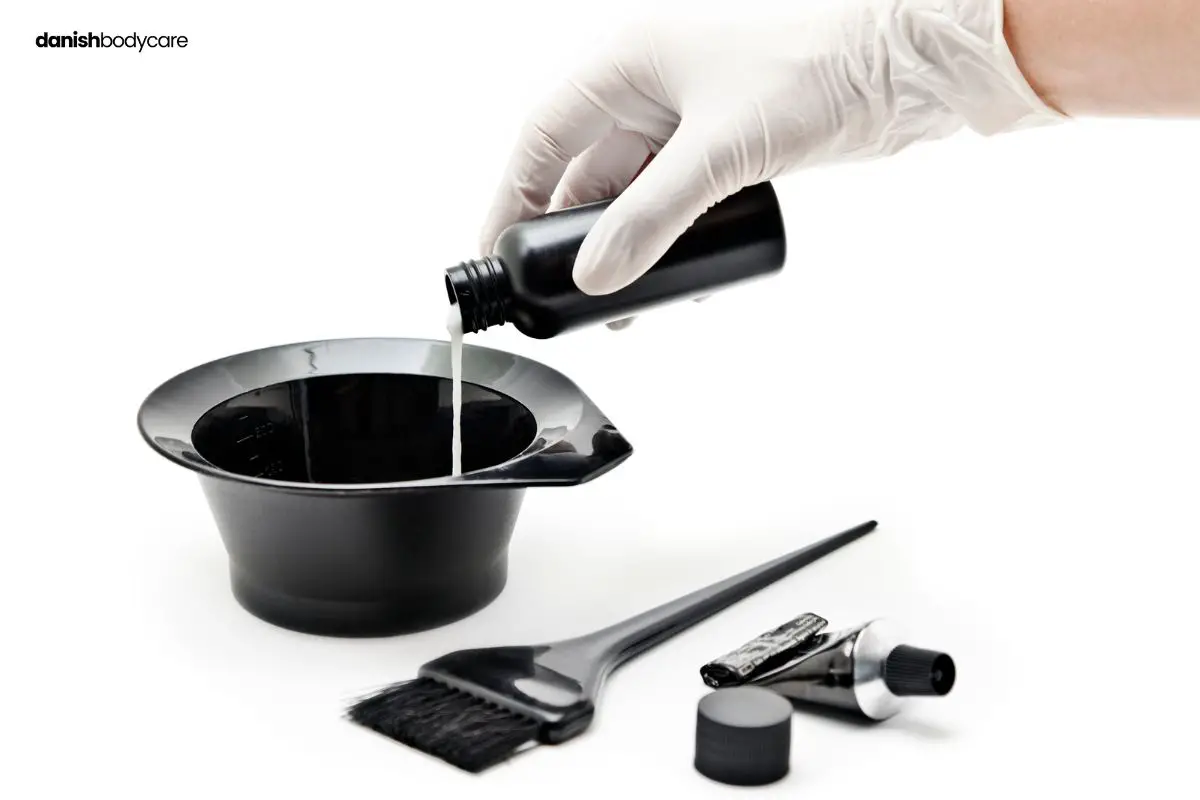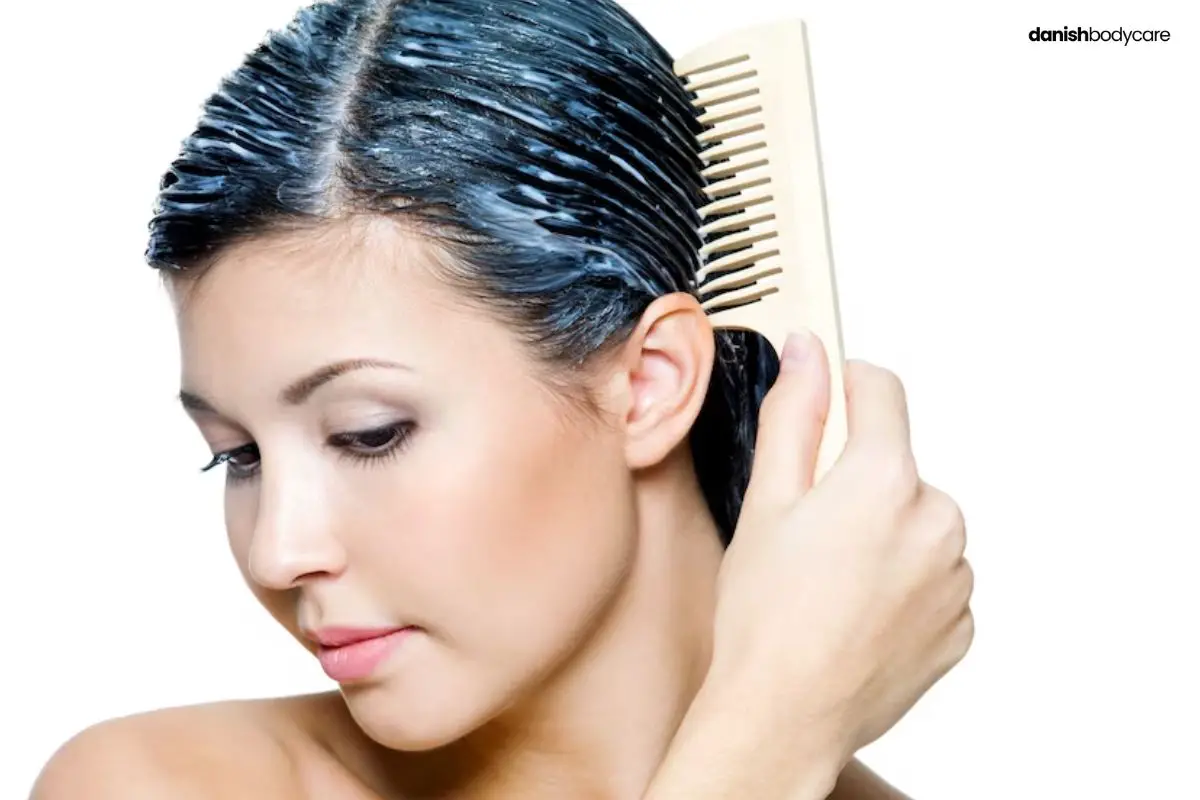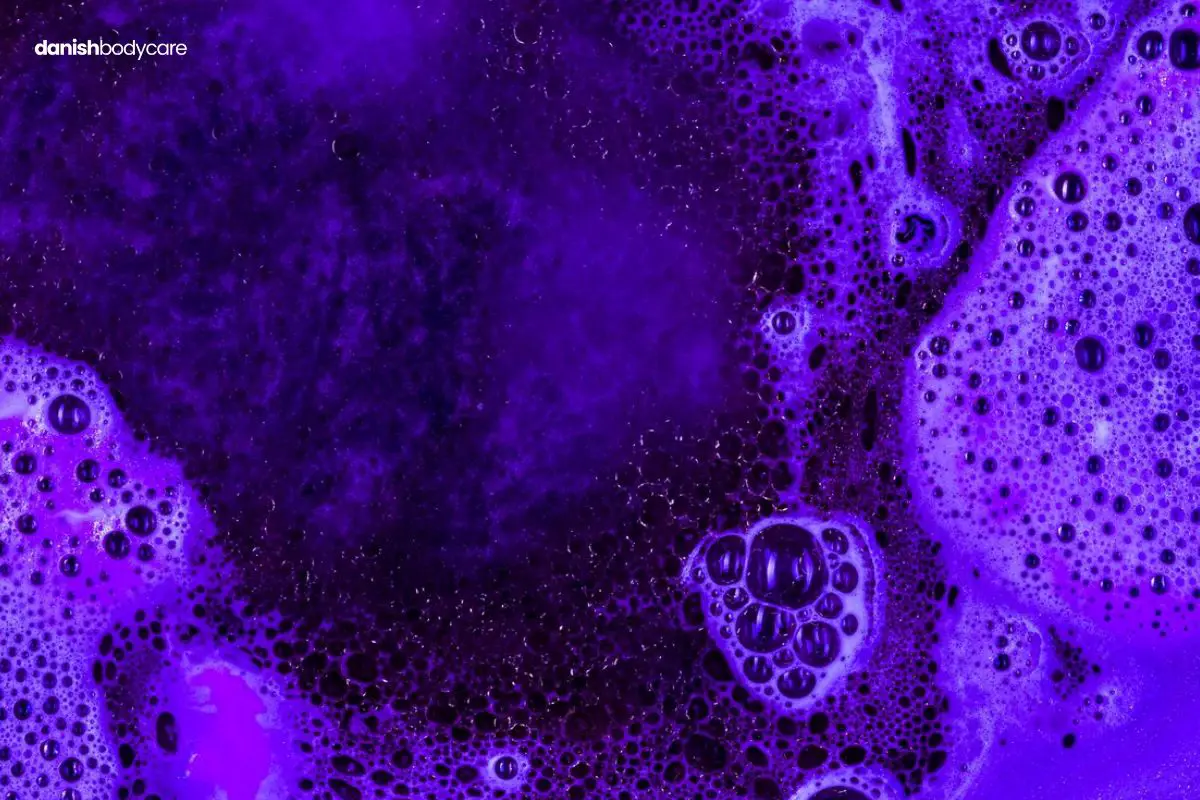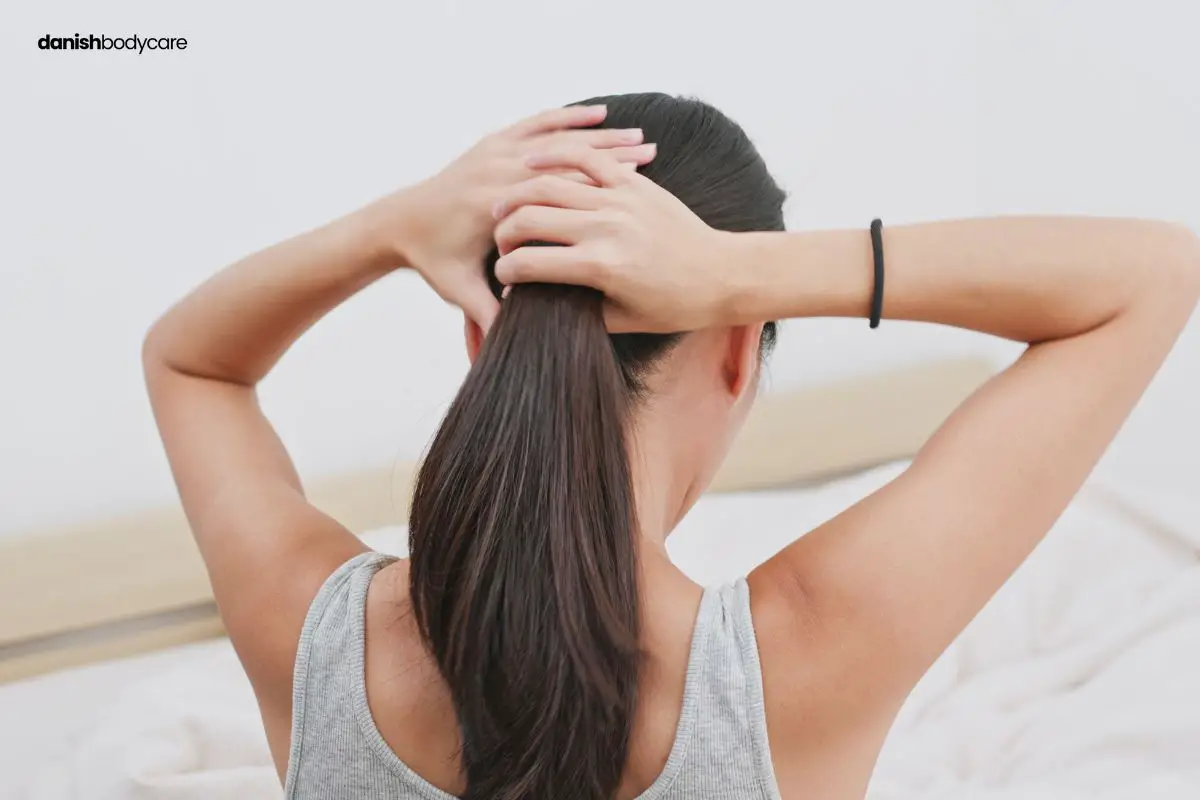Did you know, approximately 15% to 20% of hair bleach’s power can fade away after six months?
Get ready for a hair color adventure as we spill the truth about hair bleach expiry! We’ll answer the burning question: “Does hair bleach expire?”
Discover its lifespan, effectiveness, and the secrets of proper storage. So, join us and unmask the truth for your next fabulous color adventure!
How Does Hair Bleach Work?
Hair bleach works by breaking down the natural pigments in your hair, making it lighter.
Chemicals Involved
The chemicals involved in this process are hydrogen peroxide and ammonia.
Hydrogen peroxide breaks the pigment molecules. Ammonia helps to open the hair shaft, allowing the bleach mixture to penetrate the hair.
Bleach Powder and Developer
You need two main components to bleach your hair: bleach powder and developer.
The bleach powder contains lightening agents, while the developer contains hydrogen peroxide.
Mixing these two components makes a powerful reaction that lightens your hair.
Bleach Powder
The main ingredient in bleach powder is usually persulfate salts. These chemicals help to break down the hair’s pigment molecules.
Bleach powder may also contain other ingredients. These include sodium silicate for pH balancing and kaolin clay for consistency.
Developer
The developer is a crucial part of hair bleaching. It contains hydrogen peroxide, which increases the effectiveness of the bleach powder.
Developers come in different strengths, measured in volumes (10, 20, 30, or 40).
The higher the volume, the stronger the developer, and the lighter your hair will become.
Choose the right developer strength for your hair type and desired outcome.
Expiration and Shelf Life of Hair Bleach

Learn about its shelf life and why bleach loses power over time. Keep an eye on the expiration date, and always opt for new bleach for the best outcome.
Does Hair Bleach Expire?
Yes, hair bleach does expire.
Hair bleach has chemicals that lose their potency and effectiveness over time. Using expired bleach causes uneven or unsatisfactory hair lightening.
Unopened vs. Opened Products
What’s the difference between them and why is it essential to know when to use each one?
| Unopened | Opened |
| 2 years from the manufacturing date | 6-12 months once opened |
Unopened Hair Bleach
The typical shelf life of unopened bleach is 2 years from the manufacturing date.
Check the packaging for a printed date or a batch code for the expiration date. If you can’t find a specific date, it’s good practice to assume that the hair bleach has a two-year shelf life.
Opened Hair Bleach
Once opened, hair bleach has a shorter shelf life. Use opened bleach within 6 to 12 months.
Exposure to air and moisture affects the bleach’s chemical composition, reducing its effectiveness.
It’s vital to seal and store your hair bleach well to extend its shelf life.
Factors Affecting Shelf Life
Several factors can affect the shelf life of hair bleach, including:
- How and where you store your hair bleach
- Letting water and air into the bleach container
- If the container isn’t closed well before and after use
Storage Conditions
Keep hair bleach in a cool, dry, and dark place. This prevents the breakdown of its chemical components. Avoid storing hair bleach in humid or hot areas, as this can affect its shelf life.
Moisture Exposure
Do not let water or moisture enter the hair bleach container. This will weaken the bleach and reduce its effectiveness.
Proper Sealing
Close the hair bleach container shut after each use. This prevents air exposure and contamination.
Signs of Expired Hair Bleach
Here’s how you spot when hair bleach has gone bad and how to keep your hair healthy and safe during the process!
- Look for signs of separation and change in color
- Pay attention to its texture and consistency
- Longer processing time or brassiness post-bleach
Visual Indicators
Check the packaging for an expiration date. If your bleach has expired, the color may have darkened or changed. Look for any signs of separation in the bleach itself.
These visual indicators tell you that the bleach’s potency has decreased. Using it increases the risk of an undesired outcome.
Texture and Consistency Changes
Your bleach’s consistency should be smooth and easy to mix. A thick, lumpy texture is a sure sign that the bleach has expired.
Performance Decline
If your bleach no longer lifts or lightens your hair as before, it is likely expired.
Expired bleach may take longer to process or leave your hair with unwanted brassy tones.
Always use fresh bleach for your hair coloring process to achieve the desired result.
Why You Shouldn’t Use Expired Hair Dye or Bleach
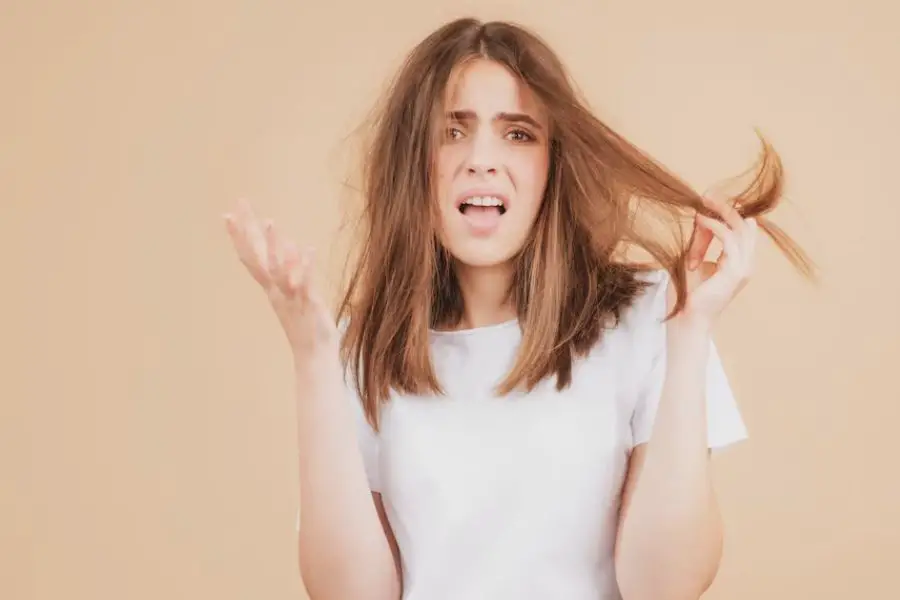
When using hair dye, it’s crucial to know if it’s expired. Here’s why:
- Expired dye can harm your hair and scalp
- You may not get your desired color
- Its ingredients become less effective
Always check the expiration date before dyeing your hair. This will keep your hair healthy and get the best results.
Damage to Hair and Scalp
Using expired bleach can be damaging to both your hair and scalp. The harmful chemicals in expired bleach can weaken your hair fibers. Additionally, the bleach can irritate your scalp, causing redness, itching, and discomfort.
Ineffective Color Results
Expired hair dye may not give you the desired color result. Over time, the chemicals in the dye can break down. The color might not develop well or appear uneven. You may end up with a shade that is far from what you wanted.
Fading Color
The ingredients in expired hair dye can become less effective. This means that even if the color does turn out the way you wanted, it may not last as long as it should.
You could find yourself needing to redo your hair color much sooner than you had planned.
How to Store Bleach the Right Way
Keep your bleach in the best condition. Discover simple steps to store it and protect its power for fabulous hair color!
- Keep your bleach in a cool, dry room
- Avoid exposure to direct sunlight or heat
- Keep the lid tight and secure
1. Temperature and Humidity Control
Store your bleach with the right temperature and humidity to make it last as long as possible.
Keep the bleach in a cool, dry area where the temperature is between 50°F and 70°F (10°C and 21°C).
Avoid storing it in places like a bathroom. The humidity there can affect the mixture. Keep the bleach away from air vents. Exposure to air can cause it to lose its effectiveness.
2. Protection from Sunlight and Heat
Don’t leave the bleach near a window or in direct sunlight. Sunlight and heat are two things that can make your hair bleach expire faster. Keep the bleach in a dark place, like a cupboard or drawer, to protect it from the sun’s rays.
Also, avoid storing it near heat sources, like radiators or heaters. Heat can cause the mixture to break down and become less effective.
3. Keeping the Package Sealed
One of the most important things you can do to ensure your hair bleach lasts is to keep the package sealed.
Make sure the lid or cap is tight and secure after each use. This will help prevent air and moisture from getting inside and affecting the bleach.
Transfer the bleach to an airtight container if you notice a damaged seal or cracks in the container.
Safety Precautions When Using Hair Bleach
Discover essential rules to protect yourself while coloring your hair.
- Read up on health risks before bleaching your hair
- Always follow the instructions on the label
- Ask the pros for help and head to the salon
Recognizing Health Risks
Avoid using bleach in a well-ventilated area to protect your lungs from strong fumes. Always wear gloves when handling hair bleach to prevent skin irritation.
Bleaching can also increase the risk of damage to your hair. Limit the frequency of bleach use and deep condition your hair between treatments.
Follow Manufacturer Recommendations
Follow the label’s instructions to avoid damaging your hair or experiencing side effects.
It will guide you on the correct usage amounts, mixing ratios, and processing times.
Seek Professional Help When Needed
Leave it to the experts if you’re unsure about using bleach at home or have experienced problems in the past.
A licensed hairstylist or salon can provide expert advice and proper application techniques. This ensures your hair stays healthy throughout the bleaching process.
Professionals also know the right way to handle and dispose of hair bleach.
Alternatives to Traditional Hair Bleach Products
Discover the alternatives to dye your hair if you’re not keen on traditional bleach.
- Lemon juice or honey and cinnamon
- Pick ammonia-free hair products
- Use hair chalk or a color-depositing shampoo/conditioner
These methods take longer than traditional hair bleach. But they are less damaging to your hair.
Natural Hair Lightening Methods
There are gentler ways to achieve a lighter hair color. Some popular natural hair-lightening options include:
Lemon Juice
Apply fresh lemon juice to your hair strands and sit out in the sun. The mixture combined with exposure to the sun can lighten your hair over time.
Honey and Cinnamon
This mixture can help condition your hair while lightening it. Mix equal parts honey and cinnamon, apply to your hair, and let it sit for a few hours before rinsing it off.
Ammonia-Free Hair Color
Ammonia-free hair colors are another alternative to traditional hair bleach products. These hair dyes use gentle ingredients, making them less likely to damage your hair.
Always read the labels. Choose a product that doesn’t contain harmful ingredients like ammonia or parabens.
Temporary Color Options
Not ready to commit to a permanent hair color change? Good news: temporary hair color options are available! These options include:
Color-Depositing Shampoos and Conditioners
These products can alter your hair color for a while without causing damage. They usually last for a few washes and can be an excellent way to experiment with different hair colors.
Hair Chalk
Hair chalk is a temporary and inexpensive way to add a pop of color to your hair. You can apply it to your hair strands and wash it out when you’re ready to return to your natural hair color.
Frequently Asked Questions
How Long Does Hair Bleach Stay Active?
Hair bleach stays active for about 30-90 minutes after mixing with the developer. The exact duration varies depending on the bleach product and the desired level of lift. Observe the bleaching process. Remove the bleach from your hair as soon as it reaches the desired level of lightening.
Does Bleach Developer Expire?
Yes, bleach developers do expire. Use the developer within 12-24 months after opening. After this period, the potency of the developer decreases. It leads to less effective hair bleaching.
Can You Save Leftover Hair Bleach?
Storing leftover hair bleach is not advisable. Hair bleach mixed with the developer starts losing its potency fast. Using old, mixed bleach on your hair may result in uneven color or lack of lift. It’s best to mix only what you need for each bleaching session. Discard any leftovers as per the manufacturer’s instructions.
Can You Use Unopened Bleach Beyond Its Expiration Date?
Using unopened bleach beyond its expiration date is not recommended. Hair bleach contains chemicals that can lose their effectiveness over time. You risk damaging your hair with a less effective product.

